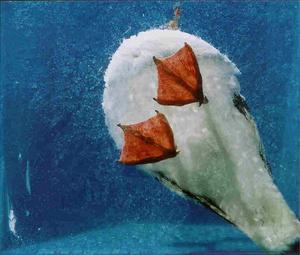I was up all night thinking how I could express this story without being gross or graphic. And give some useful information and advice about how to deal with an old problem. And provide a new perspective on something common. So, here it is, straight out: The top ten ways to deal with seagull droppings.
1. Know your bird
We’re talking about seagulls, the big birds that hang out in coastal areas and inland as far as a few miles. We are not talking about other big water birds such as the pelican, and we’re not talking about small shore birds like the piping plover, or their smaller city-dwelling look-alikes, the pigeon. It’s the seagulls.
2. Know its habitat
Seagulls live by the shore, of course, in rocky places accessible largely by air. Rock outcrops, boulders on beaches, cliffside crevices all make good nesting grounds when the birds aren’t searching for food. When they are, the marine environment provides plenty. Clams and other bi-valved mollusks are favored fare.
3. Know your habitat
Your house is your home. Those parts that are inaccessible to you may be home for the seagulls, or perhaps a mere hangout. But the big birds of the shores are likely to like the exterior hard-surfaced high spots of your house. Of particular preference are open rooftop patios of homes near the coast in California. From this high perch, the sun can be seen setting by human observers, mojito in hand, digital camera in the other, surrounded by close friends convened to share the moment. The homey high perches of East Coast variety are the “crow’s nest” structures made popular on Nantucket, Martha’s Vineyard, and Cape Cod in the 1800s. These structures were designed for sailors’ wives to observe the horizon in search of ships carrying loved ones arriving home from the sea. That practice has been reduced to observances of the horizon more for pure pleasure, and the practicality of the structure recognized more by birds perhaps looking for their mates.
4. Detecting the problem
If you have the problem, you’ll know it by looking. Evidence comes in the form of gooey piles on flat skyward surfaces or streams of white streaks starting near the top and running down the side of the building. Evidence comes also as empty, open clam shells. Remember, that’s their food, and they opened the clam to consume its contents by dropping on a hard surface like your roof. Whatever the food source, the problem shows up in the end as white. So, if your house is white you may need to look harder than if your house is made of darker colored construction materials.
The first step in solving the problem is access. Yours. You, the problem solver, or your hired hand, need to gain access to the high spots where only birds went before. Do-it-yourselfers will need to break out the 30-foot ladder or leave it to the professionals with scaffolding, helicopter drop hooks, or other specialized equipment for steady access to high places. Consider yourself lucky if the problem manifests on the patio just outside your doorstep.
6. Clean-up agents
The best clean-up agent is that universal solvent, water. And it helps to add to it a good dose of vinegar. I buy regular, white, garden-variety vinegar by the gallon for this purpose but never let it stand in as supply for the stuff used in salads. Keep it in the garage with the rest of your industrial strength household cleaning agents and there won’t be a problem. The acid in vinegar removes the etching effects of the offending substance, and water, with the aid of scrub-brushing action, will wash it all away.
7. Prevention
“An ounce of prevention is worth a pound of cure” is a fitting but fairly useless prevention tactic for this problem. A better way to attenuate the issue is by physical means. Birds’ perching on your property can be prevented by placing shiny or glittering moving objects where they like to land. Some creative tactics include hanging tin pie plates up under the eaves, installing spikes on the perimeter walls of flat roofs, and planting rooftop rows of wind-driven whirligigs. While these and other physical techniques are effective for your house, they do little for its curb appeal.
8. The problem to have
Perhaps we should be happy for the problem as presented. Consider the scope of the issue if large game or cows could fly.
9. Look up
A gaze in the upward direction gives rise to detection. If that’s where your problem is, consider not doing that anymore. Ignoring an issue or choosing not to see it works for me when I want it to. The one time I chose to look up and confront an expected problem, what I got instead was…
10. A new perspective
So, a seagull was caught in my view on a look up a skylight. It was a bird just being the bird that it is. Perhaps preparing for dirty duty, I don’t know for sure, but I know I got a new perspective on that old bird. And he seems not to be such a problem anymore.
